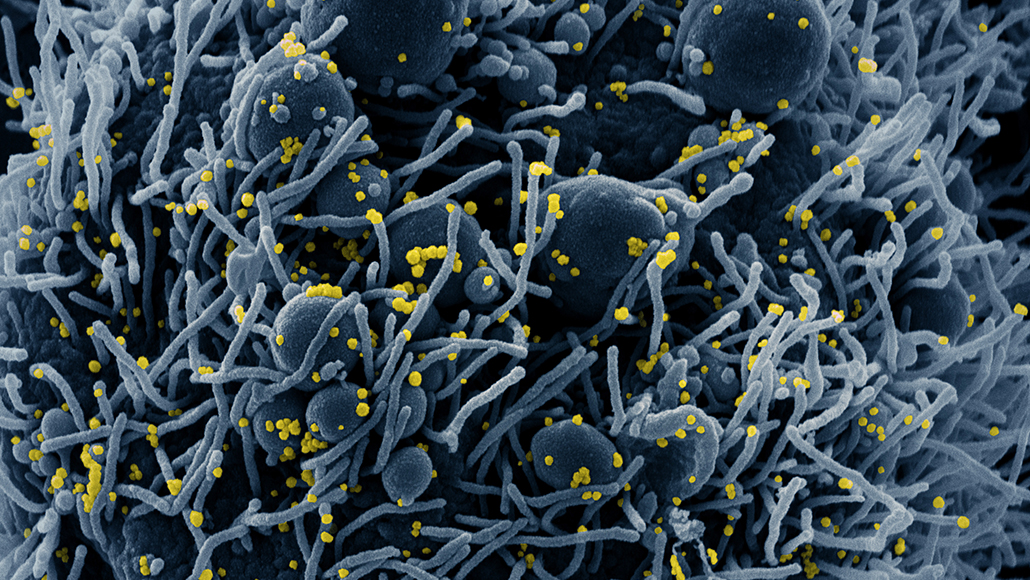COVID-19 may be most contagious one to two days before symptoms appear
More than 4 in 10 coronavirus cases are spread by those not obviously sick, a study suggests

SARS-CoV-2, the coronavirus that causes COVID-19, appears to be most contagious at the start of an infection, before people even know they have it. Here, the virus (yellow) is shown infecting a dying cell (blue) from a COVID-19 patient.
NIAID/Flickr (CC BY 2.0)








